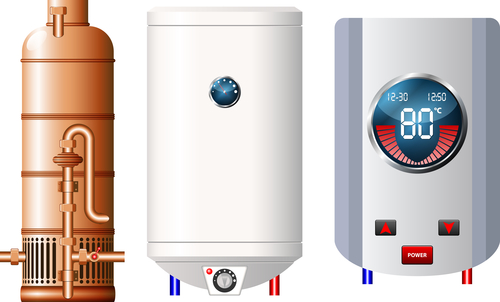Replacing or repairing any appliance or equipment at home can be discouraging; not a lot of us look forward to that task. However, the experience can be a little less daunting if we know what warning signs to look for. If you suspect that you are in need of a water heater repair, look to these signs and plan ahead.

- If you have no clue when the last time your heater was replaced, then it’s probably due for a replacement. The lifespan of water heaters is between 10 and 15 years. If you suspect yours is older or you don’t know when you got it, then it may be closing to the end of its life.
- When you try to turn on the water heater, the water that comes out is a rusty color.
- When there is no hot water coming out when you turn on the hot water, it might be because: a) the circuit breaker has been tripped; or b) the hot water heater is not functional anymore.
- When there is sediment buildup in the tank, sandy or muddy water will come out. Most of the time, you can drain the contents of the tank; this will make the water heater function normally again.
- When there is a metallic smell, or even taste, to the water when you turn on the water heater; this happens because the flakes and the grits from the inner tank is incorporating into the water in the tank. This is a clear-cut sign that you’re heater is breaking down; and you are in need of a water heater repair or service.
- Instead of hot water, only lukewarm water is coming out. This might be because the heating element is burned out. Try adjusting your thermostat to between 120 and 140 degrees – anything lower can only produce lukewarm, not hot, water.
- How often do you turn on the water heater in your house? A household with many members who use hot water will have a more active heater than a person living alone. Thus, if you know that your water heater is used more frequently, then you should watch for more wear and tear signs.
- If your water heater is making is noise, then it shouldn’t. Loud pops and cracks may be a sign that the heating elements inside the heater are reacting to some mineral or sediment buildup within.
- If you’ve already had a water heater repair done, but it still keeps breaking or causing issues and inconveniencing you, then it’s time to replace the equipment altogether – before it starts any major damage that will negatively impact your and your family’s life.
- When you notice leaks or water puddling around the water heater, then that means the inner tank has broken down. Slow leaks and drops escalate quickly and can cause serious flooding when the tank breaks.
Repair or Replace?
When you see a leak, then a water heater repair isn’t an option anymore. On a positive note, new and modern models of water heaters are more energy-efficient and environment-friendly than older ones. Manufacturers incorporate foam insulation between the tank and the outer part of it to help in increased heat retention. Glass liners also make tanks less prone to decay and decomposition.
Furthermore, high-efficiency models that are Energy Star-certified can save you up to 25% in energy costs. Solar and tankless water heaters and heat pumps can also offer more savings and even a federal tax credit opportunity. They may cost more to install, but you will be getting savings in other aspects.
Water Heater Costs
Replacing water heaters is not as plain and simple as taking out the old one and installing the new. There are local building codes and regulations that require you to get upgrades on the following:
- Venting system
- Water heater mount
- Supply pipes
- Drain pan
Before starting any water heater repair or replacement, ask the contractor to give you a breakdown of all the costs. As for doing a DIY water heater replacement, most manufacturers give detailed instructions. However, you will also need to be familiar with local building codes.

Care and Maintenance
Whether you replace or repair, your water heater will last longer and work better if you do regular check, care, and maintenance. To remove sediment buildup, flush the tank once a year. Eliminating the muck inside the tank will allow your water heater to run more efficiently, saving you money in the long run. Furthermore, the anode rod needs to be checked every three years. Also called the “sacrificial rod,” it’s a probe inside the tank made of magnesium or aluminum that gathers corrosive components. It often gets eaten away; replacing the anode rod will only cost you about $30, neglecting to do so will result in higher repair and replacement costs.

